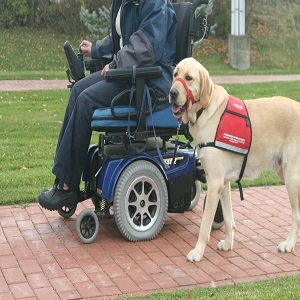Medical Assistance Dog Training: Unlocking the Power of Medical Alert DogsPosted by James Carter on June 2nd, 2023  In today's fast-paced world, individuals with medical conditions or disabilities face unique challenges. However, thanks to advances in dog training techniques and the remarkable abilities of medical alert dogs, these individuals can experience newfound freedom and support. Medical assistance dog training has emerged as a game-changer, enabling those in need to lead more independent and fulfilling lives. In this comprehensive guide, we delve into the world of medical assistance dogs, their training process, and the invaluable benefits they bring to individuals with medical conditions. Understanding Medical Assistance Dogs:Medical assistance dogs, also known as medical alert dogs, are highly trained canines that provide support and assistance to individuals with specific medical conditions. These remarkable dogs are trained to detect changes in a person's physical or emotional state, enabling them to respond appropriately and swiftly in critical situations. With their heightened sense of smell, hearing, and intuition, medical assistance dogs can detect various medical emergencies, including seizures, diabetic emergencies, allergies, and even anxiety or panic attacks. The Training Process:Training a medical assistance dog requires expertise, patience, and a deep understanding of the specific medical condition they are being trained to assist with. It typically involves several key stages: a. Selecting the Right Canine Candidate:Choosing the ideal dog for medical assistance dog training is crucial. Breeds such as Golden Retrievers, Labrador Retrievers, and German Shepherds are often preferred due to their intelligence, trainability, and friendly nature. However, individual temperament and characteristics also play a significant role in the selection process. b. Basic Obedience Training:Before focusing on medical alert tasks, the dog must undergo basic obedience training. This stage helps establish a strong foundation and ensures that the dog can respond to basic commands reliably. c. Specialized Medical Alert Training:Once the dog has mastered basic obedience, the specialized medical alert training begins. This phase involves teaching the dog to recognize and respond to specific cues or scents associated with the individual's medical condition. For instance, a diabetic alert dog may be trained to detect changes in blood sugar levels through scent. d. Task Training:In addition to medical alert training, medical assistance dogs may also be trained to perform specific tasks to assist their handlers. These tasks can include retrieving medication, activating emergency response systems, providing stability during mobility, and offering emotional support. e. Public Access Training:Medical assistance dogs must be well-behaved and obedient in public settings. They undergo intensive socialization and public access training to ensure they can accompany their handlers wherever they go without causing disruptions or safety concerns. The Benefits of Medical Assistance Dogs:The impact of medical assistance dogs on the lives of individuals with medical conditions is truly remarkable. Here are some of the key benefits they provide: a. Enhanced Safety and Security:Medical assistance dogs offer a sense of security and peace of mind to their handlers. With their ability to detect and respond to emergencies, they provide early warnings, allowing individuals to take necessary precautions or seek immediate help. b. Increased Independence:By assisting with daily tasks, medical alert dogs enable individuals to regain their independence. They can retrieve medication, open doors, and provide stability during movement, reducing the reliance on others and enhancing overall quality of life. c. Emotional Support:Medical assistance dogs provide unwavering emotional support to their handlers. Their presence alone can help alleviate anxiety and stress, and they are often trained to perform comforting tasks, such as deep pressure therapy, to help individuals cope with emotional distress. d. Social Connection:These incredible dogs act as bridges to social interaction, helping individuals with medical conditions overcome social barriers. Their presence often sparks conversations and fosters connections, reducing feelings of isolation and promoting a sense of belonging. Ensuring Success and Long-Term Support:To ensure the ongoing success of medical assistance dogs and their handlers, it is essential to establish a supportive environment. Regular veterinary care, continued training, and access to resources and support networks are crucial. Additionally, handlers must understand the legal rights and responsibilities associated with owning a medical assistance dog, including public access rights and etiquette. Medical assistance dog training has revolutionized the lives of individuals with medical conditions, providing them with increased safety, independence, and emotional support. Through a rigorous training process, these remarkable canines acquire the skills needed to detect and respond to various medical emergencies. The bond formed between a medical assistance dog and their handler is truly extraordinary, offering a lifeline of hope and companionship. Like it? Share it!More by this author |


